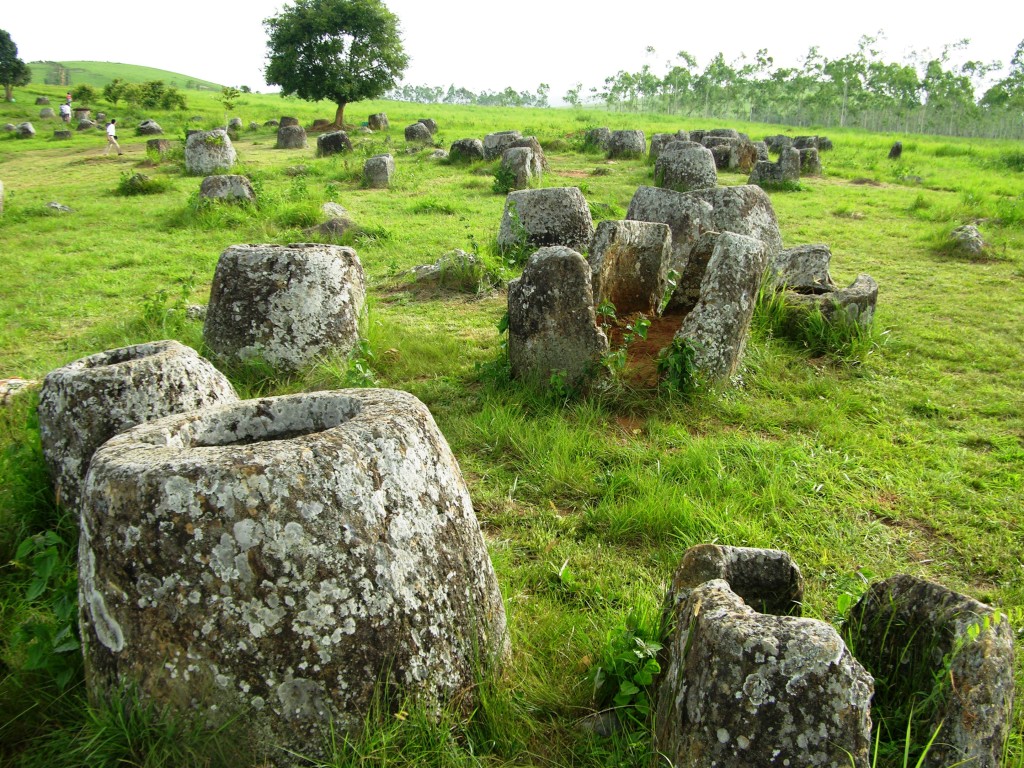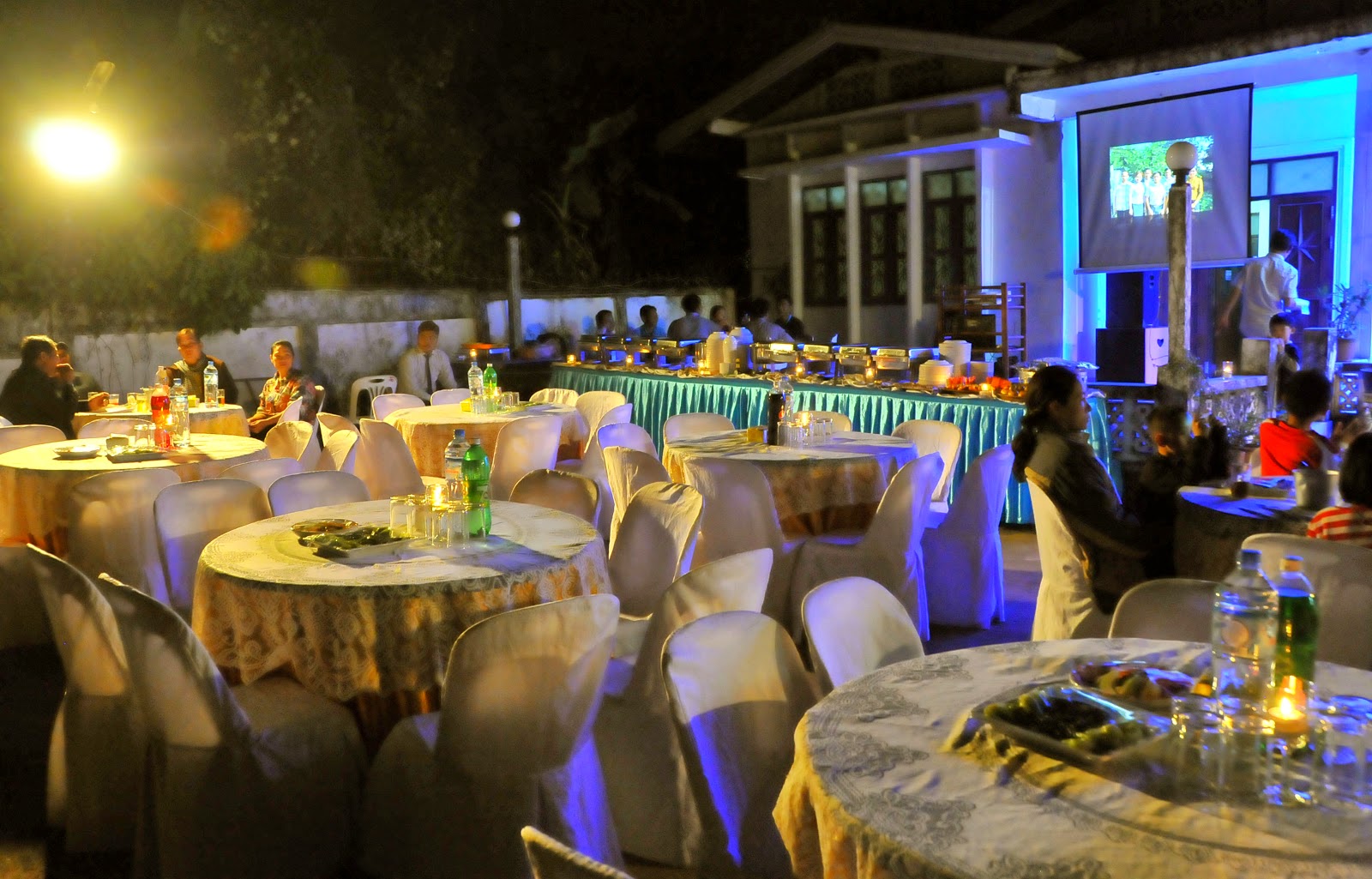Luang Prabang
performs its attraction not only by its friendly people and nice
landscape, but also overwhelmed tourists by the stunning of Mekong River
over the sunshine. If you are such tired of sitting on car every time,
or being heated all day on the road, let’s take a relaxation by a simple
book, street fruit shake and straight your foot somewhere, enjoy the
sunset, it may treat you well!
So, where can be your ideal place for sunset view? Take a look on below advises and you may need it during this summer!
1. Phousi Mountain
This place should be in the top of must-see in Luang Prabang. For both
local residence, and tourists, Phousi Hill is famous of its holy legend,
and a small challenge with 328 steps, for those want to obtain the
panorama view of whole ancient city and rivers. Of course, the best time
enjoy sunset there, is from 5:00 to 5:30 in dry season (October to
April) and 5:30 to 6:00 in rainy season (May to September).
Local people often buy some flower (frangipani or marigold), set on the
ground as the offerings, and a small bird to release, wishing for the
good luck, peace and happiness in the future.
After relax, visit ancient stupa of Wat That Chompsi, you could go down,
enjoy your time of Night Bazaa exploration, or wandering along the
street, cross Wat Sene at 06:30 pm and see the monks start to intone,
among the holy sounds of bell, drum, while the last lights’ falling on
the road.
 2. Bamboo Bridge to Dyen Sabai Restaurant
2. Bamboo Bridge to Dyen Sabai Restaurant
Enjoying sunset view on Bamboo Bridge is quite special and
unforgettable. For who never step into a bamboo bridge, it could be a
bit scared. However, it is totally not dangerous, if you pay attention
and stick tightly to the handrails.
Crossing the bamboo bridge during the sun downs gives you a chance to
see how the water changes its color into silver and golden. Watching
fisherman and local people finish their daily work along the bank, and
relax with the plenty perfume of herbs, oils from Dyen Sabai Restaurant
& Spa.
The Bamboo Bridge is only presented during dry season, till the end of
May, when the water level is lowest. The entrance fee is 5,000LAK per
time, per person.
 3. “Mekong Beach”
3. “Mekong Beach”
“Mekong Beach” is the way people calling the sand ground lying along Nam
Khan River and Mekong River, near Bamboo Bridge in Dyen Sabai. This
large beach is quite dry during summer and people often come to play
game, organize picnic weekend or some football, ultimate Frisbee (for
foreign community).
If you want to spend some wandering, take some drink, and get down stair
at the Burasary Café & bakery. Late afternoon is most suitable,
when the weather is cooler, and you could see the sun downs in a
pleasant and authentic way.

4. Wat Prabath
Wat Prabath (or Chùa Phật Tích) is on the way to Phousi Market. This is
one of the most unique, and perhaps somewhat garish, of Luang Prabang’s
monasteries, as it combines elements of Thai, Lao and Vietnamese
religious architecture. The Wat is on a site overlooking the Mekong
River and is to the southwest (downstream) of Luang Prabang so “Sunset
view” could be the most common phrase of people when coming there.
5. Utopia Bar
Well, the most (probably) famous bar for foreigners in
Luang Prabang,
could be the Utopia. Whose ideal location on the bank of Nam Khan River,
overlook to Old Bridge, stylish decoration with cozy atmosphere, plenty
choice of drinks and snacks, Utopia is the highlight of almost “Sunset
Tour” for those dream of a lazy treatment. When the light on is time for
a small yoga club outdoor. You could attend with 50,000LAK per time, or
continuing your chat as an audience is no problem!
6. Nava Mekong Cruise
Nava Mekong Cruises offers you a package of dining while sunset. With a
reasonable price, you could easily book a table on the fully-equipped
traditional boat, cruising on the Mekong River, enjoy dinner and plus
traditional dance with a large view of Mekong during sunset.
 7. Maison Dalabua Terrace Pond View
7. Maison Dalabua Terrace Pond View
Maison Dalabua Terrace Pond View is one of my favorite places when I
pass the Photisath Road at the sunset time. This open bar is pretty easy
to access and appalling enough for some soft drinks before dinner. The
pond with wooden bridge-road, flowered by seasonal lotus and water lily
brings a boutique feeling for everyone in such a touched afternoon. I
assure you could see the sun shadow on the surface, otherwise, after
some beers, you may believe that!






























